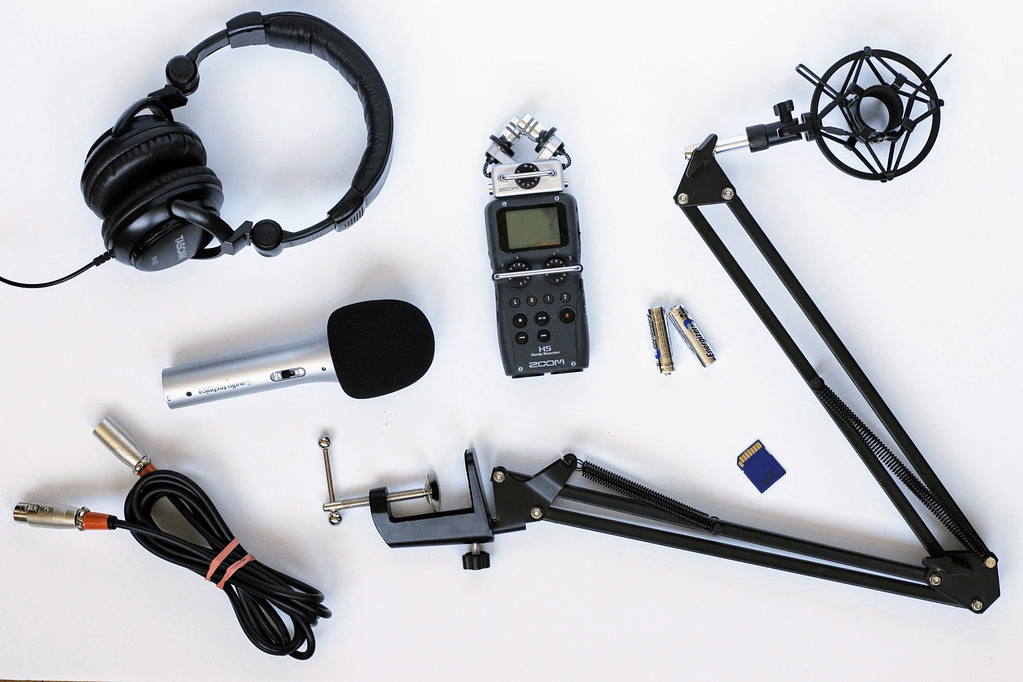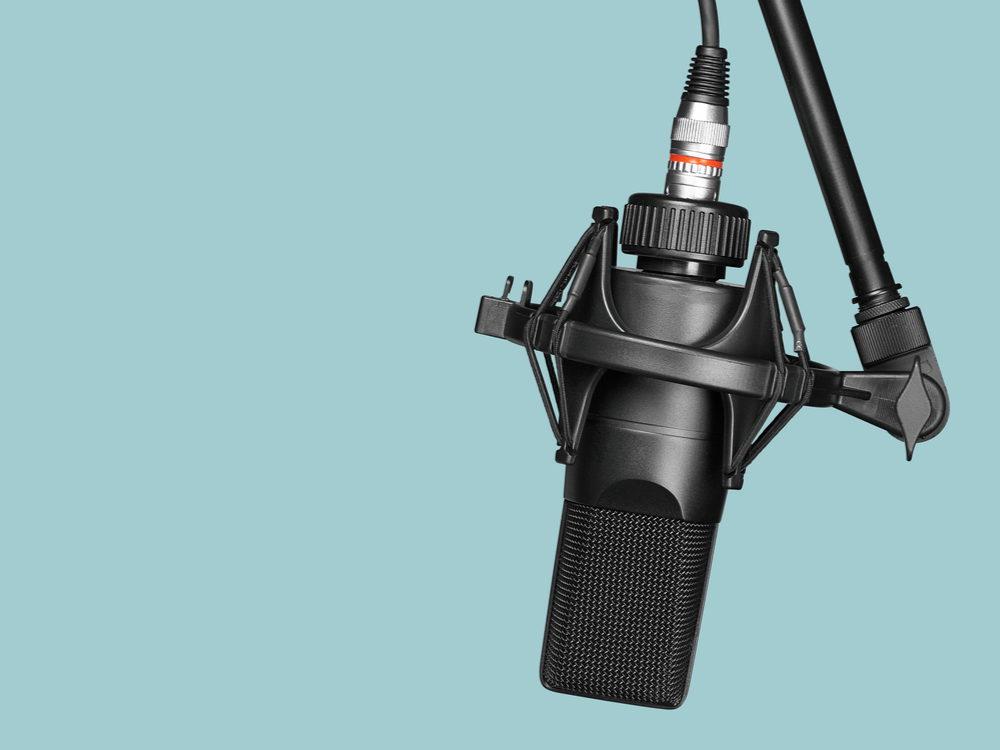Are you ready to step into the exciting world of podcasting? As a beginner podcaster, one of the most crucial aspects of creating high-quality content is having the right tools and equipment at your disposal. From microphones to recording software, setting up your podcast studio with essential gear can make a significant difference in the sound quality of your episodes. In this guide, we will explore the must-have podcasting tools and equipment for beginners to help you kickstart your podcasting journey on the right note!

Importance of Podcasting Tools and Equipment
When it comes to podcasting, the importance of quality tools and equipment cannot be overstated. The foundation of a successful podcast lies in clear audio, seamless editing, and professional production value. Investing in the right gear can make a significant difference in the overall quality of your content.
Quality microphones are essential for capturing crisp and clear sound, ensuring that your audience has an enjoyable listening experience. Audio interfaces and mixers help control levels and enhance audio quality during recording or live sessions.
Having reliable headphones and monitors allows you to monitor audio accurately while recording or editing, ensuring that every detail is captured with precision. Recording and editing software play a crucial role in post-production, enabling you to fine-tune your episodes before sharing them with the world.
By prioritizing quality tools and equipment from the beginning, you set yourself up for success as a beginner podcaster.
Microphones for Podcasting
When it comes to podcasting, having the right microphone can make a world of difference in the quality of your audio. There are various options available, but condenser microphones are commonly preferred for their sensitivity and clarity. They capture vocals with precision, making them ideal for podcasters looking for professional sound.
Dynamic microphones are another popular choice, known for their durability and ability to isolate background noise. These mics work well in less controlled environments or if you have a boisterous voice that may cause distortion on condenser mics.

USB microphones offer convenience as they can be plugged directly into your computer without the need for additional equipment. They’re great for beginners or podcasters on a budget who still want good sound quality.
The best microphone for you will depend on your recording environment, vocal characteristics, and budget. Experimenting with different types can help you find the perfect match to elevate your podcasting game.
Audio Interfaces and Mixers
Audio interfaces and mixers play a crucial role in enhancing the sound quality of your podcast. An audio interface connects your microphone to your computer, allowing for high-quality recording. It acts as the bridge between analog signals from microphones and digital signals that can be processed by editing software.
Mixers, on the other hand, give you more control over adjusting levels, adding effects, and blending multiple audio sources seamlessly. They are essential for creating a professional-sounding podcast with clear audio.
When choosing an audio interface or mixer, consider factors like the number of inputs needed for your setup, compatibility with recording software, and features such as preamps for better sound capture. Investing in a good quality interface or mixer can significantly impact the overall production value of your podcast.
Take the time to research different options available within your budget range to find the best fit for your podcasting needs.
Headphones and Monitors
When it comes to podcasting, having the right headphones and monitors is crucial for ensuring high-quality audio production. Headphones provide a direct way to monitor sound while recording or editing your podcast episodes. Look for closed-back headphones to minimize sound leakage and ensure accurate monitoring.
Monitors, on the other hand, are essential for checking the overall mix and sound quality of your recordings. Invest in studio monitors that offer a flat frequency response to accurately reproduce the audio without coloration. This will help you make informed decisions about levels, EQ adjustments, and effects during post-production.
Comfort is also key when choosing headphones for long recording sessions. Opt for lightweight and adjustable options that won’t cause discomfort over time. For monitors, consider factors like room acoustics and placement to optimize their performance in your podcasting space.
Finding the right balance between headphones and monitors will elevate the listening experience of your podcast audience while ensuring professional-grade sound quality throughout your episodes.
Recording and Editing Software
When it comes to podcasting, having the right recording and editing software is crucial for producing high-quality content. There are various options available, each with its unique features and capabilities.
Audacity is a popular choice among beginner podcasters as it’s free and user-friendly. It offers basic editing tools like cutting, copying, and pasting audio segments.
For more advanced users, Adobe Audition provides a professional-grade platform with sophisticated editing features such as noise reduction, multi-track mixing, and audio restoration tools.

Another great option is GarageBand for Mac users, offering a simple interface along with powerful editing capabilities ideal for creating polished podcasts.
No matter which software you choose, the key is to familiarize yourself with its functions to maximize your podcast’s sound quality and production value. Experimenting with different effects and techniques can help you find your unique style in the world of podcasting.
Choosing the Right Tools for Your Budget
When starting a podcast, selecting the right tools within your budget is crucial. There are various options available, so it’s essential to prioritize based on your needs. Begin with a quality microphone; it’s the heart of your setup. Investing in an audio interface or mixer can enhance sound quality by managing input levels and adjusting settings.
Consider headphones and monitors for accurate audio monitoring during recording and editing. Recording and editing software play a significant role in producing professional-quality episodes. Research different options to find one that suits your workflow best.
It’s important not to overspend on equipment you may not need initially. Start with the basics and upgrade as you grow. Remember, creating engaging content is key – focus on storytelling rather than solely relying on expensive gear for success.
Tips for Setting Up Your Podcast Studio
Setting up your podcast studio can be an exciting and crucial step in your podcasting journey. To ensure a smooth setup process, start by selecting a quiet room with minimal background noise to record your episodes.
Invest in soundproofing materials like acoustic panels or foam to improve the audio quality and reduce echoes in your recordings. Position your microphone correctly, ensuring it’s at a comfortable height and distance from your mouth for optimal sound clarity.
Arrange your recording equipment such as microphones, headphones, and audio interfaces within easy reach to avoid unnecessary cable clutter. Use pop filters to minimize plosive sounds when speaking into the mic.
Consider investing in a good-quality desk or table for stability while recording and editing. Organize cables neatly to prevent tripping hazards and maintain a clean workspace conducive to creativity.
By following these tips, you’ll be well on your way to setting up a professional podcast studio that enhances the overall quality of your content creation process.
Must-Have Accessories for Professional Sound
When it comes to creating a professional-sounding podcast, having the right accessories can make a significant difference in the quality of your audio. One essential accessory is a pop filter, which helps reduce plosive sounds like “p” and “t” for clearer recordings.
Another must-have accessory is a shock mount for your microphone. This helps minimize vibrations and handling noise, ensuring that your sound remains crisp and free from unwanted disturbances.
Investing in acoustic treatment such as foam panels or soundproof curtains can also greatly improve the overall sound quality of your recordings by reducing echoes and external noises.
Don’t forget about cable management! Keeping your cables organized not only makes your setup look more professional but also prevents any interference or signal loss during recording sessions.
Conclusion
As you embark on your podcasting journey, remember that the tools and equipment you choose can make a significant impact on the quality of your content. Investing in high-quality microphones, audio interfaces, headphones, recording software, and accessories is essential for creating professional-sounding podcasts.
By selecting the right gear for your budget and setting up a well-equipped podcast studio, you can ensure that your recordings are clear and engaging. With the right tools at your disposal, you’ll be ready to dive into the world of podcasting with confidence.
Whether you’re a beginner podcaster or looking to upgrade your setup, having the essential podcasting equipment will set you up for success. So gather your gear, hit record, and let your voice be heard in the exciting realm of podcasting!
Stay tuned for more such content, check QAWire


